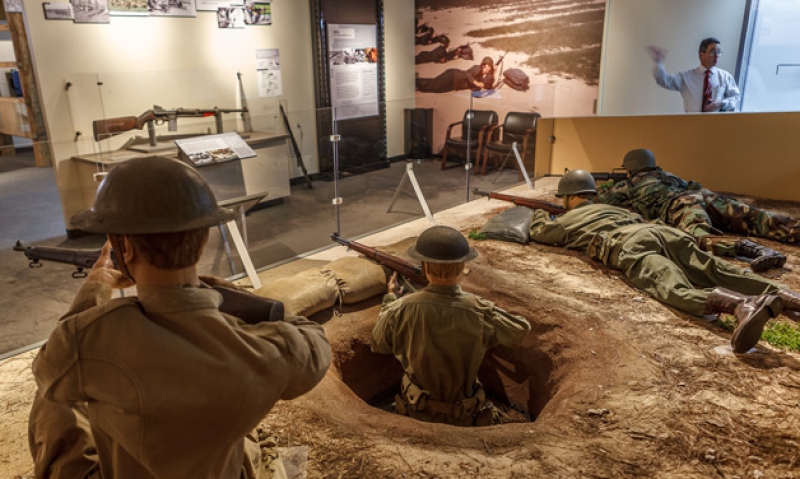
Unique experience at Fort Jackson museum
 View Photo Gallery
View Photo Gallery
Young and old visitors touring the Basic Combat Training Museum at Fort Jackson are guided through the 10-week training course that transforms civilians into soldiers.
And that’s by design, according to Henry Howe, the director of the museum in Columbia, S.C. After all, soldiers and their families account for a large majority of the museum’s 60,000 visitors each year.
"Every museum is going to be a bit different," said Howe, who served in the Air Force. "We lay ours out that way because this is what the soldiers of today understand. Our biggest clients who come through the museum are the soldier and his family on the day before graduation, Family Day. So when we bring the soldier in, we want him to walk his mom and dad, brothers and sisters through and say, ‘This is what I saw.’ And if his parents, or his grandparents, or those who came before him, are there with him they can start comparing, ‘Here’s what I did when I was in basic training 35, 45, 55 years ago.’ "
That’s fitting for Fort Jackson, since more than 50 percent of U.S. Army soldiers go through basic training at the sprawling 52,000-acre complex. Previously, the museum had focused exclusively on the history of Fort Jackson, which has been training soldiers since 1917. But after a renovation a couple of years ago, the museum presents a unique experience to visitors.
"All museums have a storyline that they want to stay within," Howe said. "And our storyline is the basic combat training for the U.S. Army. How we take away the individuality of just generic folks and breed them into a uniformed soldier. It starts with the haircut, starts with the changing of the clothes, starts with a new attitude."
The museum, which does not charge admission, follows the three phases of basic training:
Red Phase: Soon after entering the museum, visitors are greeted by a virtual drill sergeant warning recruits, "Many who have come before you went on to do great things. Many who have come before you have failed." In conclusion, he demands, "Get on the bus … GET ON THE BUS!"
For visitors there is no bus, just a carpeted walking path that takes them on a journey of discovery. They pass through displays and videos that document the early days of training: communications, first-aid, pugil fighting and gas mask training.
White Phase: This is the weapons phase, where a new virtual sergeant greets the audience with a serious tone and talks about next steps. In this phase, visitors learn about the weapons that recruits are learning to use.
Blue Phase: The final phase begins with yet another virtual sergeant, who welcomes the soldiers and talks about being part of the team. This phase focuses on MREs, tents and various scenarios that servicemembers might find themselves facing. There are table-sized models of various battlefields that American soldiers have fought on throughout the years. For example, trenches in World War I, booby-trapped villages during Vietnam and the urban environments found today in the Middle East.
The training covers such situations "so that soldiers don’t initially find themselves in a combat situation not knowing what to expect," Howe said. "Obviously, we can’t give you the full flavor of it with guns and bullets and bombs going off in actuality, but we can mimic a lot of that with lights and sounds. And in some cases, we even get foreign-speaking actors to play the insurgents, or the local populations."
The museum tour concludes with large photographs of graduation ceremonies. Tanks are available for viewing outside the museum. In the future, Howe is planning for an obstacle course for kids – on playground equipment, not the tanks.
They’ll have to wait for their own basic training. After which time, perhaps they can return to the museum and swap stories with family members about how basic training has continued to evolve.
